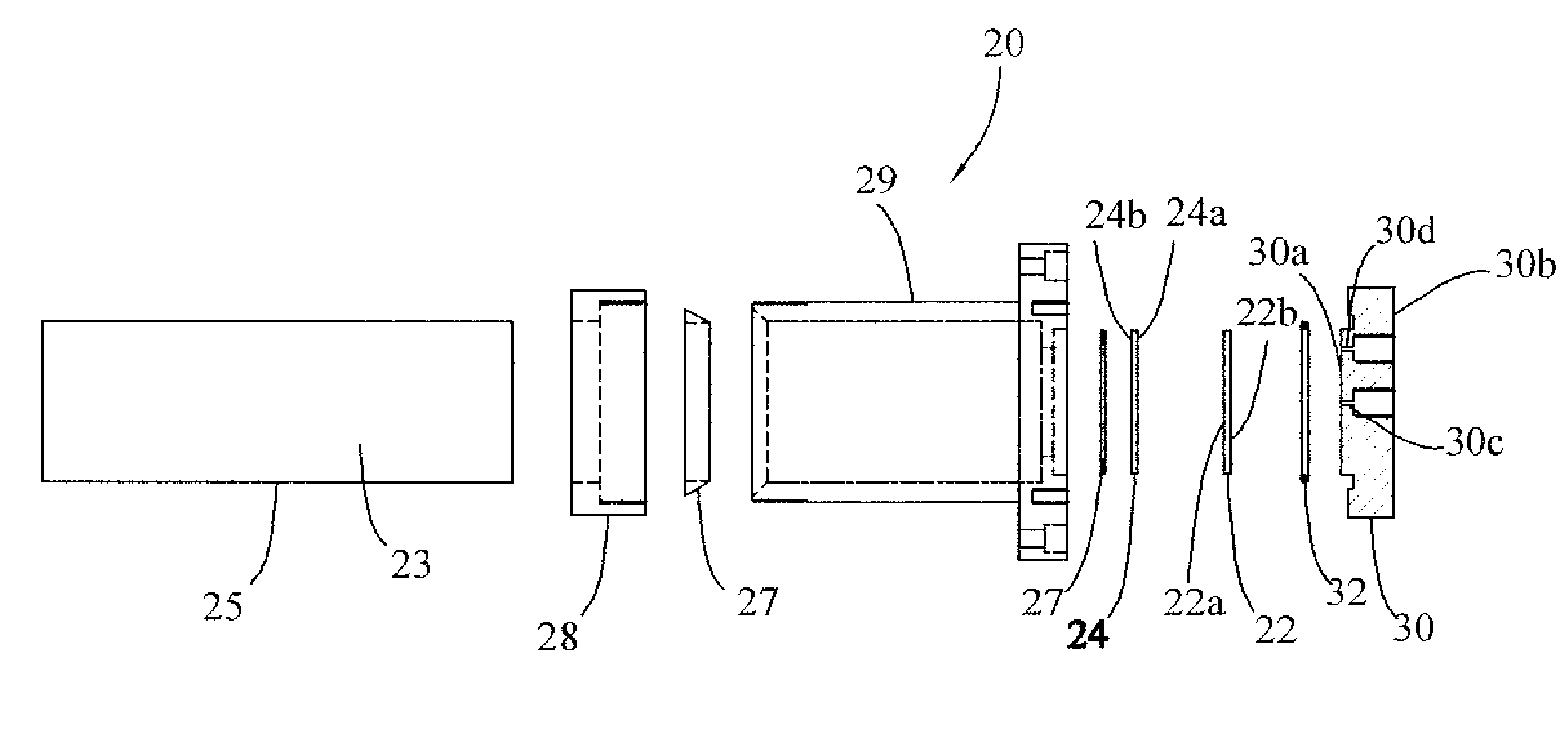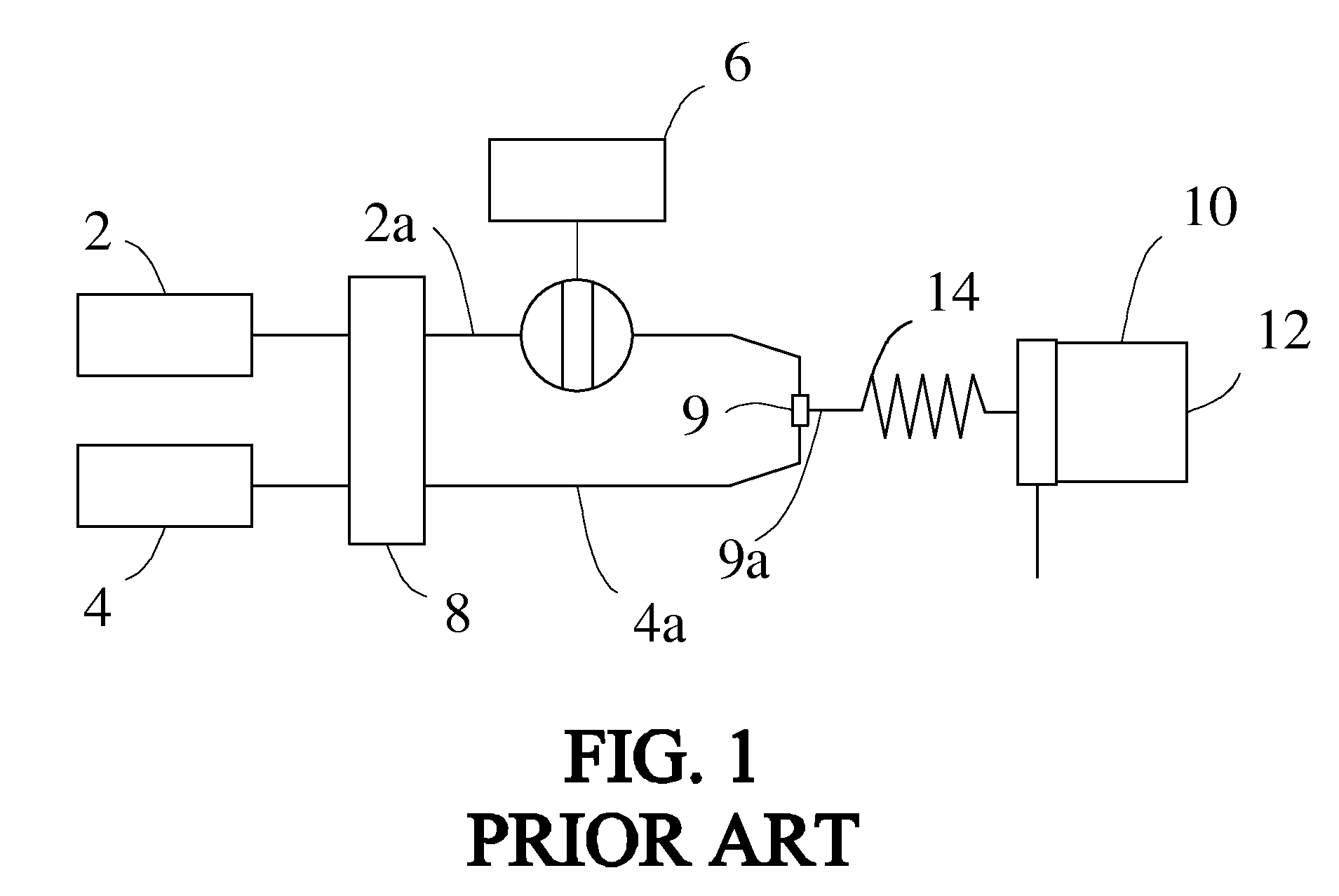Flow cell for chemiluminescence analysis
a flow cell and flow cell technology, applied in the field of flow cells for chemiluminescence analysis, can solve the problems of light loss in the tubing wall, inability or easy to achieve, and other flow paths such as reversing turns which enhance mixing,
- Summary
- Abstract
- Description
- Claims
- Application Information
AI Technical Summary
Benefits of technology
Problems solved by technology
Method used
Image
Examples
Embodiment Construction
[0025]More specifically, reference is made to FIG. 4, in which is shown a flow cell for chemiluminescence analysis, made in accordance with the principles of the present invention, and generally designated by the numeral 20.
[0026]The flow cell 20 comprises a flat, thin plate 22 having first and second opposite faces 22a and 22b. There is a flat sapphire window 24 having first and second opposite faces 24a and 24b. In lieu of the sapphire window, quartz, glass, or other acceptable materials may be employed. By “acceptable” is meant “maximally transparent in wavelength range of emission of the emitted light and chemically resistant to the reagents used”. An example would be emitted radiation in the “visible” region of the light spectrum. Sapphire, quartz and glass would all be acceptable. However, with emitted radiation in the “ultraviolet” spectral region, glass would no longer be acceptable, due to limited light transmission. A light detector 23 such as a circular photomultiplier, p...
PUM
| Property | Measurement | Unit |
|---|---|---|
| chemiluminescence | aaaaa | aaaaa |
| flow-based chemiluminescence | aaaaa | aaaaa |
| Chemiluminescence | aaaaa | aaaaa |
Abstract
Description
Claims
Application Information
 Login to View More
Login to View More - R&D
- Intellectual Property
- Life Sciences
- Materials
- Tech Scout
- Unparalleled Data Quality
- Higher Quality Content
- 60% Fewer Hallucinations
Browse by: Latest US Patents, China's latest patents, Technical Efficacy Thesaurus, Application Domain, Technology Topic, Popular Technical Reports.
© 2025 PatSnap. All rights reserved.Legal|Privacy policy|Modern Slavery Act Transparency Statement|Sitemap|About US| Contact US: help@patsnap.com



